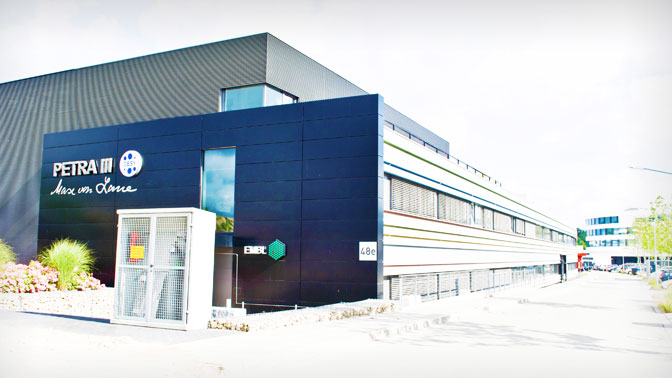
A recent study led by Dr. Emil Pai, Emeritus Scientist at the Princess Margaret Cancer Centre, and Dr. Dwayne Miller, University Professor at the University of Toronto, has provided researchers with a new method to efficiently observe enzymes in action.
In a biological cell, enzymes are the molecular machines that facilitate the chemical reactions required for life. Given their small size, it is a challenge to get an accurate picture of what they do and how they do it.
To observe enzymes at work, researchers align them into tiny crystals, which they then place under a ‘spotlight’—a very narrow and very bright X-ray beam. Each crystal can only be exposed for a short time before it is destroyed by the bright X-ray beam.
To overcome this problem, Dr. Pai and his colleagues constructed a platform to observe a large number of enzyme crystals—a silicon chip about the size of a loonie, with over twenty thousand tiny wells etched into its surface. Each well can hold one small crystal of the enzyme being studied.
“Several solutions have been proposed to watch fast enzymes at work,” explains Dr. Pai. “To observe slower enzymes, however, these methods would require extremely long periods of time—hours to days. The enzyme crystals, however, are not stable for so long and would be damaged.”
“If you observe the wells one at a time, periodically taking X-ray snapshots of the enzyme as it completes its task, twenty thousand wells would take a long time to study,” remarks Dr. Pai.
To reduce the experimental time and minimize damage to the enzymes, the research team programmed the system to move the silicon chip quickly and strategically, thereby reducing the time taken to complete each part of an experiment from many hours down to 15 minutes.
This approach is also capable of producing more snapshots per second compared to other methods, which improves the quality of the time-lapse movies made from these snapshots. A better picture of how enzymes work will ultimately provide new insights into the roles of such enzymes within the cell.
This work was supported by Deutsche Forschungsgemeinschaft, EU Seventh Framework Programme, Alexander von Humboldt Stiftung, ETH Research Council, the Natural Sciences and Engineering Council of Canada, the Canada Research Chairs Program, the Burroughs Wellcome Fund and The Princess Margaret Cancer Foundation.
Schulz EC, Mehrabi P, Müller-Werkmeister HM, Tellkamp F, Jha A, Stuart W, Persch E, De Gasparo R, Diederich F, Pai EF, Miller RJD. The hit-and-return system enables efficient time-resolved serial synchrotron crystallography. Nat Methods. 2018 Nov. doi: 10.1038/s41592-018-0180-2.




